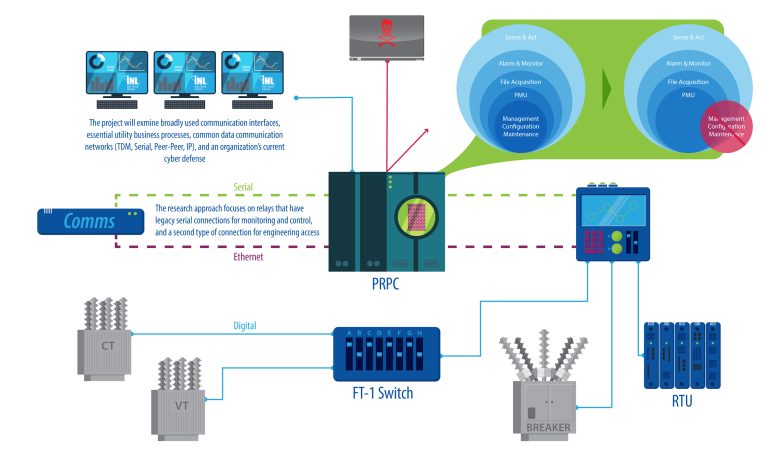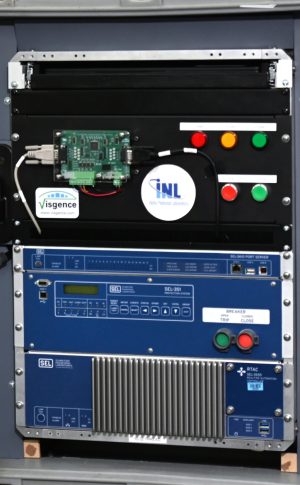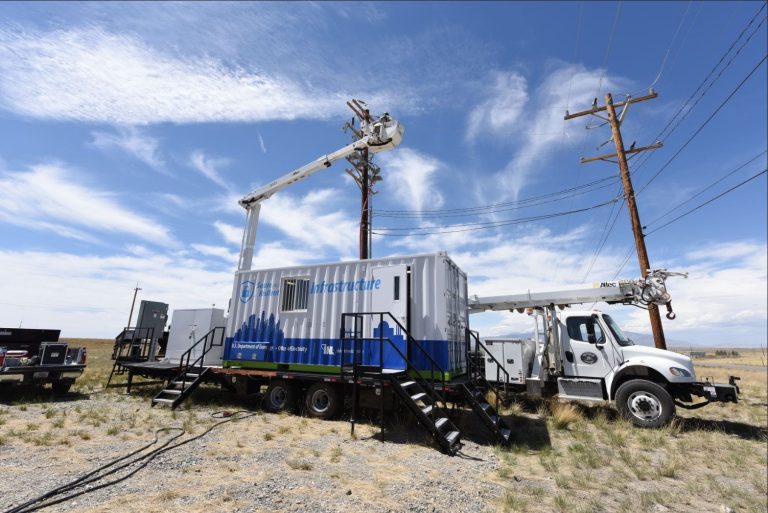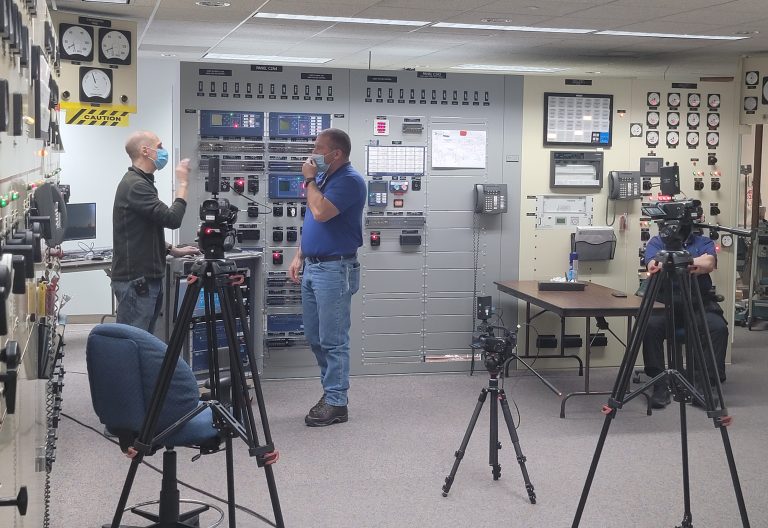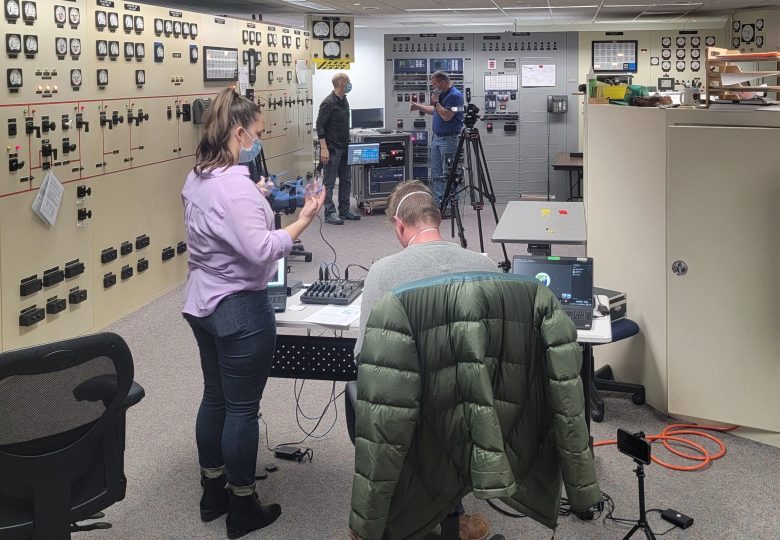Protective Relay Permissive Communication
Detecting and Blocking Cyberattacks from Grid Operations
The Department of Energy Office of Electricity (DOE-OE) partners with INL on the Protective Relay Permissive Communication (PRPC) program to develop solutions to protect the modern power grid from cyber and physical threats. One of the most important components of the electric power grid is the protective relay. When equipment fails or dangerous actions are initiated, relays protect power systems from damage. Protective relays protect against conditions on the power grid that could negatively affect the grid, damage equipment or cause loss of life.
The PRPC program studies ways to transition protective relay equipment to a limited state. In a limited state, only the most essential relay functions operate. This constrained state represents an additional depth of cybersecurity defense while maintaining important business functions.
How Protective Relay Permissive Communication Works?
The Protective Relay Permissive Communications program objective is to deliver a broad recommendation to industry on improving cybersecurity depth-of-defense for protective relays, and a simple technology device to support relay owners that has minimal impact to existing critical CIP requirements. The diagram below shows how the program works.
Demonstrations and Workshops
Constrained Cyber Communication Device (C3D) Demonstration
Researchers at Idaho National Laboratory have developed and demonstrated a new technology to detect and block cyberattacks from impacting electric power grid operations. The technology, called the Constrained Communications Cyber Device (C3D), uses advanced communication capabilities to autonomously review and filter commands sent to protective relay devices. If a malicious command is suspected, the device intelligently and automatically filters it out. Researchers collaborated closely with private industry, academia and the U.S. Department of Energy’s Office of Electricity on its development as part of the Protective Relay Permissive Communication project.
Western Area Power Administration Workshop
On Feb. 23-24, 2022, INL’s PRPC team held a “Cybersecurity in Protective Relaying” Workshop at the Western Area Power Administration’s headquarters in Colorado. The workshop included a Constrained Communications Cyber Device (CD3) demonstration and technical discussions about Master State-Awareness Estimator.
Workshop Purpose
- Understand the need for cybersecurity in substations and specifically protective relaying.
- Build awareness of electric utilities’ and industry’s efforts regarding cybersecurity in protective relaying.
- Get suggestions and prioritization of industry needs for cybersecurity in protective relaying that may be developed in the next two years.

